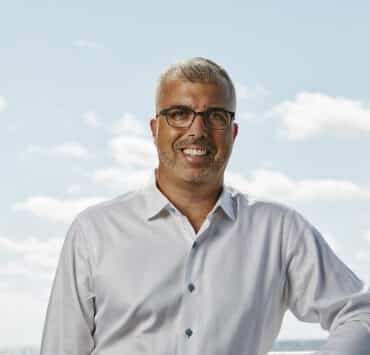When it comes to private equity entering the health space, Daniel Shockley understands the trepidation. The chief financial officer at Alliance Physical Therapy Partners has read the same headlines as the rest of us: large private equity funds go in, buy a private company, load them with debt, and file for bankruptcy a year later.
“It gets a lot of news, and it should,” Shockley explains. “But I’d like to think that is an incredibly small number of the broader PE population.”
Shockley has seen firsthand the value that can be created when private equity does its homework. When BPOC, a well-established healthcare investor, made a strategic investment in Alliance in 2021, positive changes quickly ensued.
“Along with fantastic customer service scores, which we’ve always maintained, we expanded our footprint significantly in nine months,” the CFO says. “That’s just indicative of where we want to continue to grow over the next four or five years.”
“Along with fantastic customer service scores, which we’ve always maintained, we expanded our footprint significantly in nine months.”
Daniel Shockley
It’s not just about new clinics—it’s about the kinds of services Alliance will be able to offer. They opened their first pediatric therapy clinic in 2022, as well as their first women’s health clinic. There are more specialty services on the way, and many of these changes are made possible by a strategic investment from a private equity firm that understands its goals.
“At this level, I don’t really use the term ‘private equity,’” Shockley explains. “I think it’s ‘growth equity.’ BPOC is committed to seeing us grow. It’s a real partnership that will make returns for their investors while helping us grow the right way.”
Daniel Shockley is no stranger to the conservative approach. He entered the job market just as Enron and Arthur Andersen collapsed. A top-five accounting firm suddenly no longer existed, and Shockley saw friends who had offers rescinded at a shocking clip. There was another significant change that, fortunately, outlasted the hard times.
“Corporate governance suddenly became a significant part of the finance function,” the CFO remembers. “Right off the bat, I learned the lesson that, hey, the numbers cannot be wrong.”
“Our partners and top-tier clinicians allow us to provide home exercise programs, analyze different musculoskeletal movements and pain that the patient is incurring, and allow the therapist to diagnose and help the patient.”
Daniel Shockley
After Enron, it was the economic collapse of 2008. The housing market collapsed, banks were going bust, and Shockley, for better or worse, was front row for another educational moment.
“Even on a personal basis, getting an approval letter for a house loan didn’t mean you should buy that house,” Daniel Shockley says. “At the same time, I had moved into private equity, where so much of the external market was impacting what we were doing on a day-to-day basis. Maybe that’s why I tend to act a little more conservatively.”
Alliance isn’t Shockley’s first job in healthcare, and he says he was thrilled to come back to the space because of the direct impact he can make on patient health. The pandemic, of course, meant that the company has had to adapt to challenging conditions. For example, Alliance was able to significantly enhance its teletherapy program through a partnership with sophisticated technology partners.
“Our partners and top-tier clinicians allow us to provide home exercise programs, analyze different musculoskeletal movements and pain that the patient is incurring, and allow the therapist to diagnose and help the patient,” the CFO explains. “It’s not a Zoom call. It’s a viable alternative for people who may not be near a clinic or may be near the end of their treatment, and right now it’s a growing part of our total visits across the business.”
Shockley admits that when one thinks of physical therapy, they think of being right next to a trained therapist. But the CFO also says that often, those who are prescribed physical therapy don’t follow through. Whether it’s about the distance they must travel or schedule conflicts, a majority of those prescribed don’t go.
“I think the numbers are between 75 and 90 percent that don’t seek prescribed treatments, but even if they’re 50 percent, think of how much good this can do. I’m incredibly proud of what our Agile Physical Therapy Team has been able to accomplish.”
Daniel Shockley is well-informed about Alliance’s IT efforts because he wears a lot of hats at the company; he’s as invested in cybersecurity as he is in revenue cycle or other financial matters. How is he able to able to manage such a wide charge?
“You just have to have good people in place and great leadership. Our CEO, Richard Leaver, sets the tone for the entire organization and alignment across the platform,” Daniel Shockley says. “We’ve made able to make some fantastic internal promotions, like our controller Matt Potter, and it also happens with clinicians being promoted to clinic directors.”

